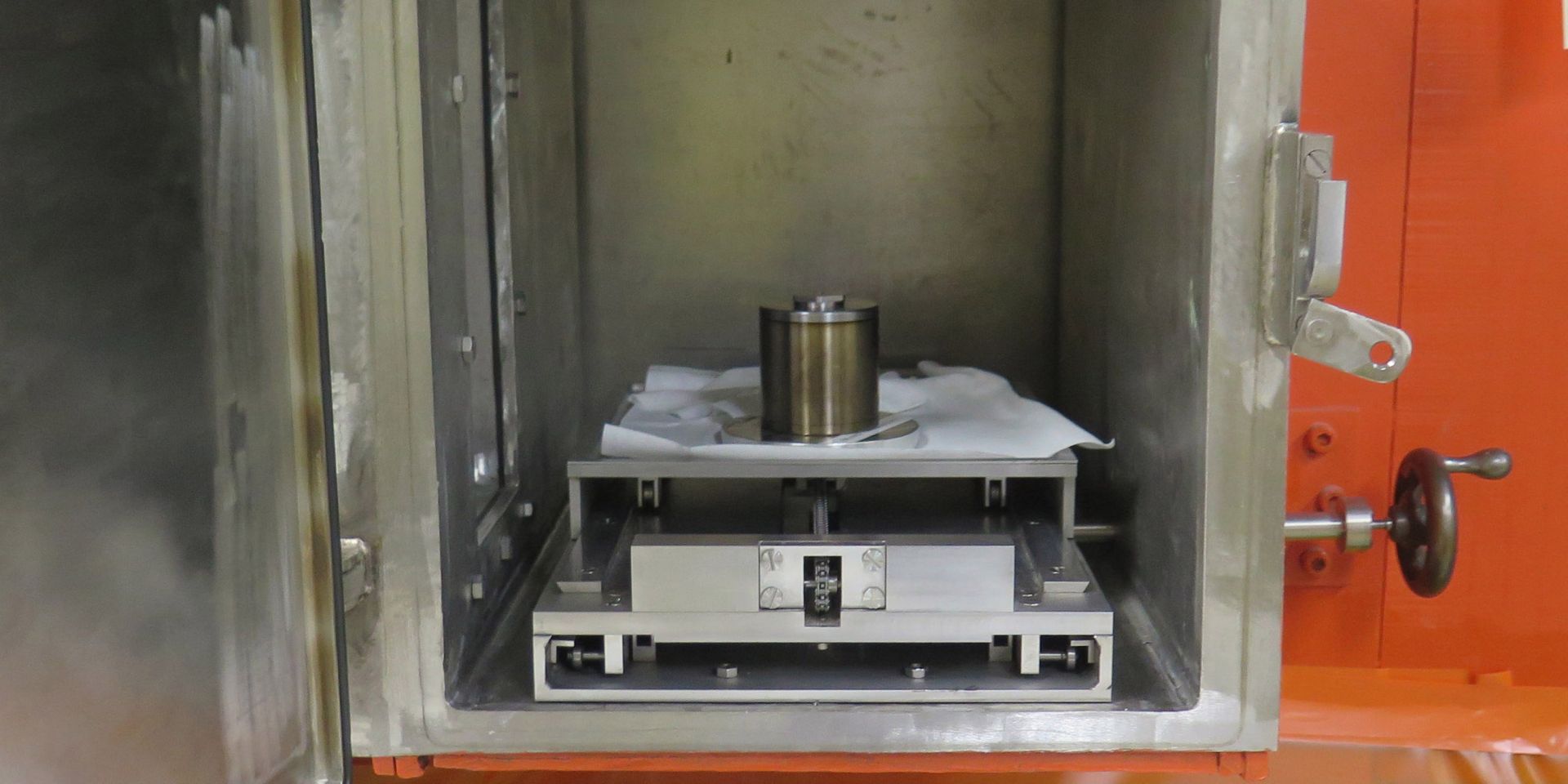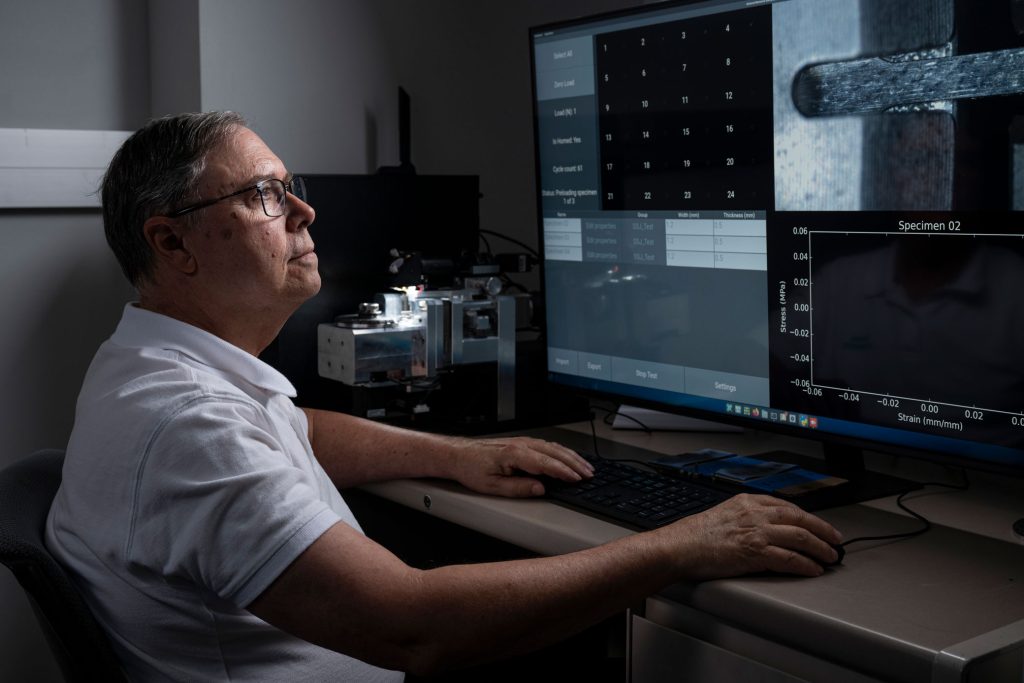Housed at MIT’s Plasma Science and Fusion Center, the Schmidt Laboratory for Materials in Nuclear Technologies will use a compact cyclotron to accelerate the testing of materials for use in commercial fusion power plants. (Image: Rick Leccacorvi and Rui Vieira/PSFC)
The Massachusetts Institute of Technology’s Plasma Science and Fusion Center (PSFC) has launched the Schmidt Laboratory for Materials in Nuclear Technologies (LMNT). Backed by a philanthropic consortium led by Eric and Wendy Schmidt, LMNT is designed to speed up the discovery and evaluation of cost-effective materials that can withstand extreme fusion conditions for extended periods.
June 13, 2025, 12:34AMNuclear NewsAlex Gilbert, Harsh Desai, Patrick Snouffer The Z1 heat source was the first Sr-90 heat source built in the United States in nearly four decades and the first of its kind for a commercial company. (Photo: Zeno Power)
In the fall of 2023, a small Zeno Power team accomplished a major feat: they demonstrated the first strontium-90 heat source in decades—and the first-ever by a commercial company.
Zeno Power worked with Pacific Northwest National Laboratory to fabricate and validate this Z1 heat source design at the lab’s Radiochemical Processing Laboratory. The Z1 demonstration heralded renewed interest in developing radioisotope power system (RPS) technology. In early 2025, the heat source was disassembled, and the Sr-90 was returned to the U.S. Department of Energy for continued use.
Professor Joseph Newkirk operates a testing device in Missouri S&T’s Toomey Hall. (Photo: Blaine Falkena/Missouri S&T)
Concept art of the Dow plant in Seadrift, Texas. (Source: X-energy)
The Nuclear Regulatory Commission is providing the opportunity to request a hearing on Dow Chemical Company’s application to construct a 320-MWe nuclear power plant at the company’s Seadrift site in Calhoun, Texas. Long Mott Energy, a wholly owned subsidiary of Dow Chemical, submitted its construction permit application to the NRC in March. It was accepted for review by the agency on May 12.
Concept art of the planned Sizewell C plant on the Suffolk coast, featuring two French-designed EPRs. (Image: Sizewell C)
It’s a move that “brings to an end decades of dithering and delay, with the government backing the builders.” That’s how the U.K. government announced, with alliterative fanfare, its £14.2 billion (about $19.2 billion) investment in Sizewell C, where EDF Energy plans to build two 1,600-MWe EPRs.
Concept art of Rolls-Royce SMR’s reactor design. (Image: Rolls Royce)
Rolls-Royce SMR has emerged as the United Kingdom’s preferred bidder to build the country’s first small modular reactors following a two-year competition, the U.K. government announced June 10. Rolls-Royce SMR expects to build three SMRs with Great British Energy–Nuclear, subject to contracting later this year and regulatory approvals. Great British Energy–Nuclear will “aim to allocate a site later this year and connect projects to the grid in the mid-2030s.”
WIPP completed the commissioning of a large-scale ventilation system, known as the Safety Significant Confinement Ventilation System, this spring. The system will restore full ventilation to the underground repository. (Photo: DOE)
This spring, the Department of Energy’s Office of Environmental Management announced that it had achieved a major milestone by completing commissioning of the Safety Significant Confinement Ventilation System (SSCVS) facility—a new, state-of-the-art, large-scale ventilation system at the Waste Isolation Pilot Plant, the DOE’s geologic repository for defense-related transuranic (TRU) waste in New Mexico.
Technical advisory committee members in front of a full-scale universal nuclear waste canister prototype developed through ARPA-E’s UPWARDS program. (Photos: Deep Isolation)
At COP28, held in Dubai in 2023, a clear consensus emerged: Nuclear energy must be a cornerstone of the global clean energy transition. With electricity demand projected to soar as we decarbonize not just power but also industry, transport, and heat, the case for new nuclear is compelling. More than 20 countries committed to tripling global nuclear capacity by 2050. In the United States alone, the Department of Energy forecasts that the country’s current nuclear capacity could more than triple, adding 200 GW of new nuclear to the existing 95 GW by mid-century.
The SMR control room simulator in NuScale’s newest E2 Center began operation at George Mason University. (Photo: NuScale /George Mason University)
The Quad Cities nuclear power plant. (Photo: Constellation)
The Nuclear Regulatory Commission is conducting a special inspection at Constellation’s Quad Cities nuclear plant to review two events caused by battery issues. Neither event had any impact on public health or plant workers.












 rotated.jpg)



